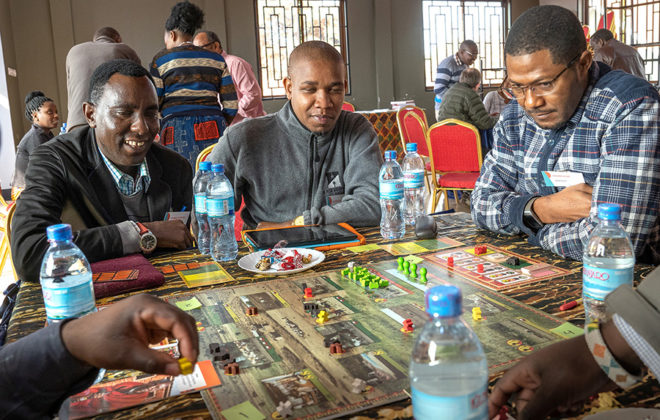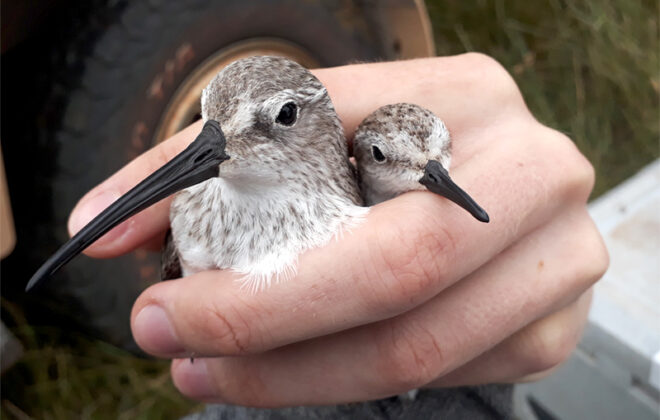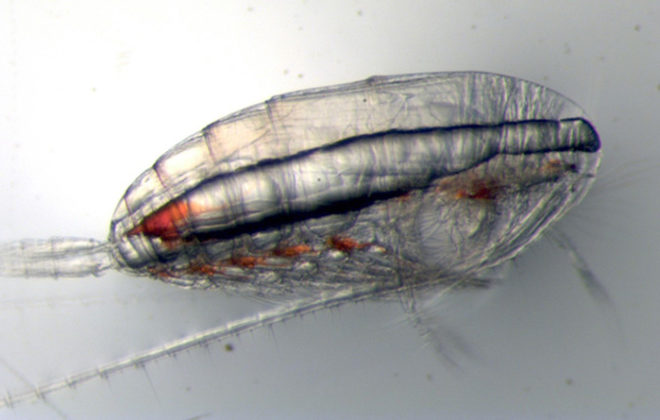How do chromosome ends shape the life of wild birds?
Winter is here and animals in the wild are facing challenges of how best to spend their energy. A lot of the small birds that can be seen now, were hatched this year and grew rapidly in the spring to reach their adult body size. Now, it’s about surviving until they may be able to reproduce next year. All organisms are bound to allocate their energy between growth, survival and reproduction. How organisms differ in the resolutions to such trade-offs shapes the diversity of life-history strategies among species.
However, our knowledge about the mechanisms that underpin these trade-offs is still limited. A candidate for mediating life-history trade-offs is found at the chromosome ends.
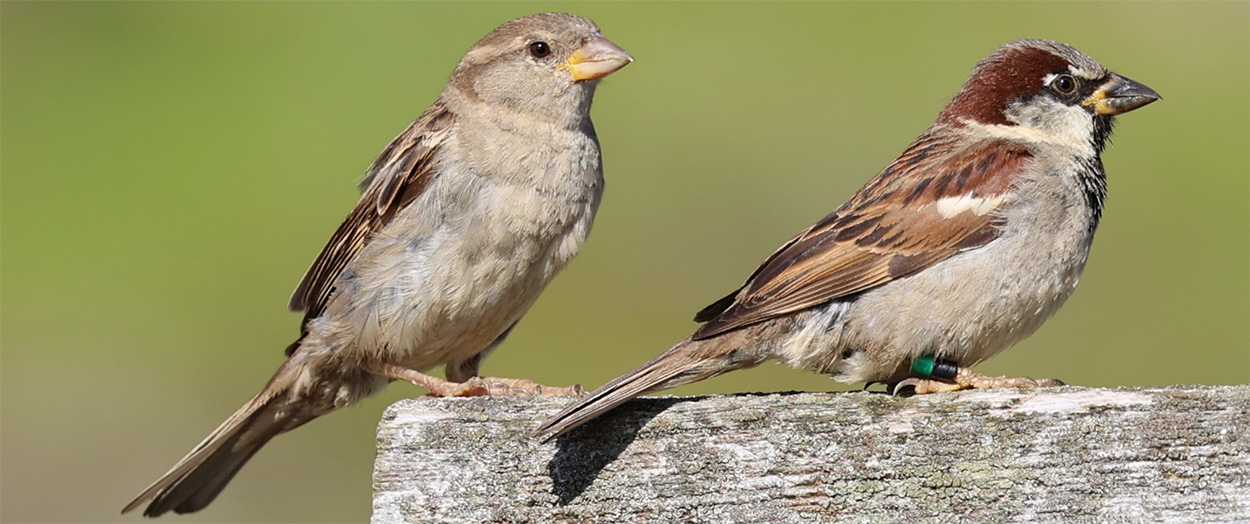
In the end, what’s the problem?
When you grow, cells divide, and the DNA, which is then packed into chromosomes, must be copied (i.e. replicated). However, the replication machinery cannot fully copy the entire DNA, which is known as the “end replication problem”. Instead of losing DNA that may encode important genes, a long stretch of short repeated non-coding DNA sequences cap the chromosome ends. These are called telomeres (literally meaning endpieces), and they protect chromosomes – a bit like the plastic tips that protect the ends of shoelaces from unraveling.
Free radicals, which are highly reactive molecules generated during metabolism and in response to stress, may especially damage telomeres. Processes such as exposure to harsh weather, reproduction, poor nutrition or infection that increase (oxidative) stress are therefore also thought to make telomeres shorter. Telomeres therefore shorten through life and if they become too short, the cell stops dividing – and it may die – leading to senescence. Every stress leaves a scar, and you pay by becoming a little older, as a famous endocrinologist once put it. However, telomeres can be prevented from shortening: Most cancer cells are immortal because they rebuild telomeres.
In my PhD thesis, I investigated telomeres in house sparrows utilizing almost 30 years of fieldwork by researchers and students at the Department of Biology, NTNU. On several small islands in northern Norway, house sparrows have been consistently captured, blood sampled and released to monitor their life-history. The telomere length at different time points through their life can then be measured by extracting DNA from the blood samples.

On being the right size
We first used an experiment to test how changes in body size would affect telomere length. As expected, when adult birds were artificially selected for bigger size, their offspring were bigger and had indeed shorter telomeres. When selecting for smaller size, there were no strong effects on offspring size or telomere length, suggesting that the offspring may be small for non-genetic reasons.
However, both in the experimental and in other natural populations of sparrows, we found a negative association between size and telomere length. This suggests that increased growth comes at a cost to telomeres.
Nature and nurture
Because we know how the sparrows in our study are related across many generations, we can tease apart the contributions from genetics and the environment that determine telomere length. There was a small heritable component of variation in telomere length, suggesting that selection on telomere length may produce evolutionary changes in telomere length over time.
After investigating differences in the DNA of different individuals, it was possible to identify several genes that could be involved in determining telomere length. Curiously, these genes were also involved in processes related to oxidative stress, growth, and cancer risk in other species.
However, most of the variation in telomere length among individuals was driven by environmental effects early in life leading to differences between years and broods. Telomeres were shorter when the birds had experienced bad weather conditions in the nest, and in years when population density was higher, which may lead to more competition for the nestling’s insect food. What doesn’t kill you doesn’t necessarily make you stronger.
Some birds may even have been born old. Nestlings that were inbred were found to have shorter telomeres. For example, sparrows whose parents were siblings had half as long telomeres as non-inbred sparrows. Although sibling sparrows rarely mate, inbreeding, which can be harmful, is not uncommon in these small island populations.
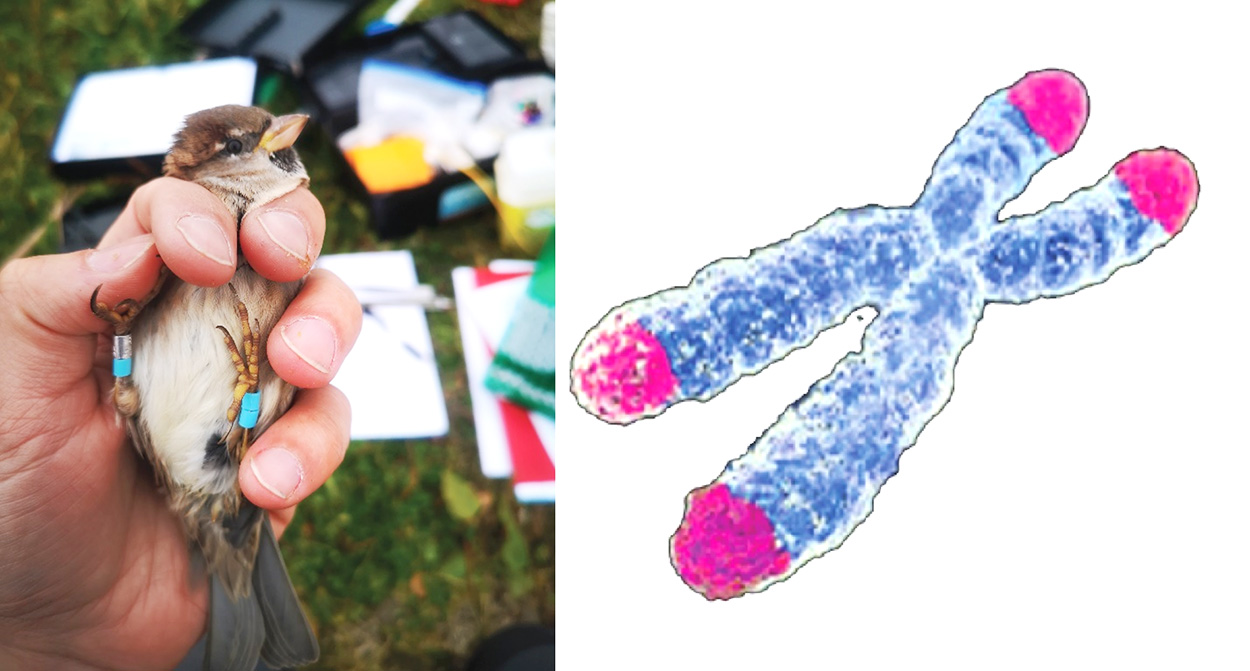
Molecular threads of destiny?
That early-life conditions affect telomere length has fostered the analogy of the threads of fate that may be cut short by the Norns of the Norse mythology to determine lifespan. Indeed, in some species including humans and long-lived birds, telomere length can predict health- or lifespan.
However, in the house sparrows, where most of the nestlings don’t survive their first winter, we found no strong evidence for associations between early-life telomere length and survival or the number of offspring produced.
Furthermore, although telomeres generally shortened with age, as expected, they were apparently elongated within some individuals. This suggests that telomere length may be more plastic than previously anticipated.
A life-history pacemaker
Telomeres are ancient molecular structures that are shared among mammals, fish, birds and other reptiles. Comparing telomere lengths across different species may therefore tell us about their role in the evolution of life-history strategies.
When comparing telomere lengths across bird species, such as penguins, gulls and sparrows, we found that species with shorter telomeres were more “slow-lived”, that is, they lived longer, were bigger and had smaller clutch sizes. Telomeres were similarly shorter in bigger and longer-lived mammals.
We also found that mammals with shorter telomeres had less cancer, suggesting that large, long-lived species had evolved short telomeres to fight the increased cancer risk associated with having many cells and a long life.
The long and short of it
In a nutshell (or rather eggshell), telomere length in house sparrows is a dynamic trait that is influenced by both genetic and environmental factors. It is heritable and controlled by many different genes.
Already in early-life, telomere length revealed subtle physiological costs associated with growth, environmental conditions and inbreeding status. However, further research is required to understand how telomere length, or the change in telomere length, impacts survival and reproduction in house sparrows.
On an evolutionary timescale across millions of years, telomere length was found to have coevolved with key life-history traits among species. Thus, telomeres may be an important mediator of the trade-offs between reproduction, maintenance of the organism and cancer risk, shaping the variety of life-history strategies we find among animals in nature.
Michael Le Pepke was a PhD candidate at the Centre for Biodiversity Dynamics (CBD) at the Department of Biology, NTNU. His PhD thesis “The ecological and evolutionary role of telomere length in house sparrows” can be found here. He was supervised by Thor Harald Ringsby, Henrik Jensen, Thomas Kvalnes and Jonathan Wright.

Michael Le Pepke
Michael Le Pepke was a PhD candidate at the Centre for Biodiversity Dynamics (CBD) at the Department of Biology at NTNU. His PhD thesis was called “The ecological and evolutionary role of telomere length in house sparrows”. He was supervised by Thor Harald Ringsby, Henrik Jensen, Thomas Kvalnes and Jonathan Wright.
Search
Søk
Categories
- Arctic Research
- Arkitektur
- Bærekraft
- Bioingeniørfag
- Biologi
- Biology
- Biomedical Laboratory Science
- Biotechnology
- Bioteknologi
- Chemical Engineering
- Chemistry
- Climate
- Computer Science
- Datateknologi
- Digital
- Elektronikk
- Energi
- Energi
- Energy
- Engineering
- Engineering
- Environment
- Food Science
- Forskning
- Fysikk
- Fysikk
- Havbruk
- Informasjonsteknologi
- Informasjonsteknologi
- Ingeniørvitenskap
- Kjemi
- Kjemisk prosessteknologi
- Kjemisk prosessteknologi
- Kreftbehandling
- Kybernetikk
- Marine Technology
- Materialer
- Materials Science
- Materialteknologi
- Matvitenskap
- Meninger
- Miljø
- Min ph.d.
- My PhD
- My PhD
- My postdoc
- Nanotechnology
- Nanoteknologi
- Ocean
- Oil and gas
- Physics
- Research
- Simulering og visualisering
- Spør en forsker
- Studentliv
- Sustainability
- Ukategorisert
- Universitetsliv
- University Life
Kategorier
- Arctic Research
- Arkitektur
- Bærekraft
- Bioingeniørfag
- Biologi
- Biology
- Biomedical Laboratory Science
- Biotechnology
- Bioteknologi
- Chemical Engineering
- Chemistry
- Climate
- Computer Science
- Datateknologi
- Digital
- Elektronikk
- Energi
- Energi
- Energy
- Engineering
- Engineering
- Environment
- Food Science
- Forskning
- Fysikk
- Fysikk
- Havbruk
- Informasjonsteknologi
- Informasjonsteknologi
- Ingeniørvitenskap
- Kjemi
- Kjemisk prosessteknologi
- Kjemisk prosessteknologi
- Kreftbehandling
- Kybernetikk
- Marine Technology
- Materialer
- Materials Science
- Materialteknologi
- Matvitenskap
- Meninger
- Miljø
- Min ph.d.
- My PhD
- My PhD
- My postdoc
- Nanotechnology
- Nanoteknologi
- Ocean
- Oil and gas
- Physics
- Research
- Simulering og visualisering
- Spør en forsker
- Studentliv
- Sustainability
- Ukategorisert
- Universitetsliv
- University Life

